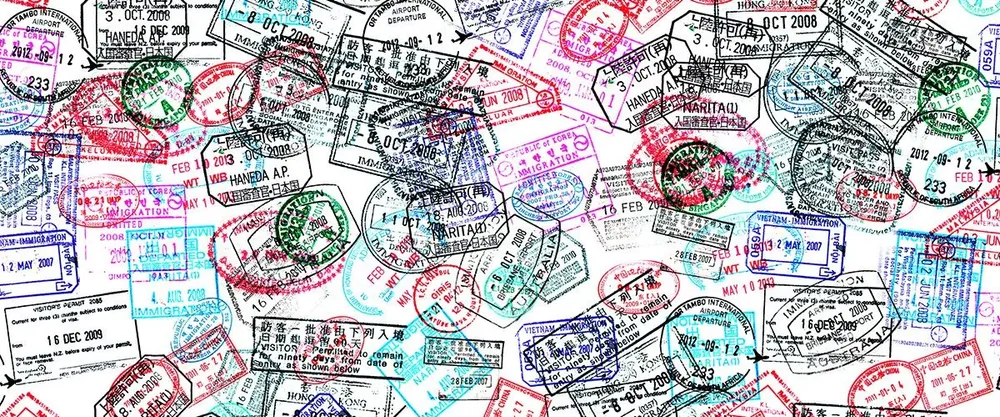Express Entry (EE) was launched in January of 2015 as a streamlined immigration pathway for educated and skilled individuals living in Canada and abroad. To date, it continues to be the most popular and well-known program that is inquired and used by many.
It’s a lottery-like system that selects applicants with active profiles and competitive scores a few times per month during EE draws. In this context, a competitive score means any score that is above the cut-off score of each draw.
Below you will find a detailed breakdown on what EE entails.
Profile Creation
To create a profile, the applicant needs to have a valid language test and an official education assessment for highest post-secondary education if it was obtained from a non-Canadian educational institution.
Education assessment can only be completed by designated organizations such as:
- World Education Services
- Comparative Education Services (University of Toronto)
- International Credential Assessment Service of Canada
- International Qualifications Assessment Service
- International Credential Evaluation Service
These assessments will determine the post-secondary education level based on Canadian metrics. Most often the evaluation equally assesses the degrees, but there are instances where some Masters level degrees are recognized in Canada as Bachelor level degrees.
In the event the applicant has a Bachelors degree and another diploma of 1 or 2 years, it is best advised to evaluate all to see if additional points would be applicable against the EE point grid.
Valid language tests are required to prove the applicant’s ability to speak English or French: the official languages that are spoken in Canada.
Accepted tests are IELTS and CELPIP for English, TEF and TCF for French. Language tests have 2 years validity mark, so it’s always advised to use a fresh test for profile creation.
If the language test expires before the applicant receives the invitation to apply for permanent residence, the profile will expire as well and no longer be active.
EE profile also has a 1-year validity date - even if the language test is valid but 1 year had passed without an invitation to apply for permanent residence, the profile will be deemed as inactive and expired. Applicant can re-create the profile as many times as they wish as long as they have a valid language test result and hope that one day, they will get selected.
EE profile cannot be created without the 2 items mentioned above. For individuals whose highest post-secondary education was obtained in Canada - an education assessment is not required. Language test is required for everyone without exception - even to those who were born and raised in an English or French speaking country.
To create and activate an EE profile, the applicant will be asked to complete a questionnaire-type application that will ask questions about identity documents, education, work experience, etc.
At this stage, the system won’t ask to upload any documents but will use the information to calculate the overall score.

Victoria, Canada - named the country's most romantic city.
Assessment Factors
Applicant is assigned points based on the following areas:
- Age: the maximum score is assigned to applicants that are within 20 to 29 years of age. At and after 30, the points start decreasing.
- Education: maximum number of points are granted to PhD holders while secondary school holders hold the lowest score.
- Language proficiency gets assessed per language test, so in the event the applicant can speak English and French, the system will ask to select a primary language - it gets evaluated on a higher point grid in comparison to the second one.
- Spouse’s post-secondary education and language proficiency can add to the overall profile score, but the points are calculated in a slightly different way if the applicant is married.
- Canadian post-secondary education and work experience - must have at least 1 year of work experience in Canada on a valid work permit.
- Skilled foreign (non-Canadian) work experience must be at least 1 year in duration. Maximum score is assigned to individuals that have at least 3 years of work experience. It doesn’t have to be with the same employer or within the same title, but it must be 1 full year in duration.
- Certificate of qualification enabling to work in specific occupations in Canada such as industrial, electrical, construction, maintenance and equipment operations.
- Job offer from a Canadian employer that facilitated a work permit application to Canada.
- Sibling in Canada that has a Canadian citizenship or permanent resident status
- Nomination from the province to apply for permanent residence via a provincial nominee program that is connected with Express Entry.
Subclasses of Express Entry
EE is an umbrella that consists of 4 subclasses that filters every applicant based on their background information.
When an applicant creates a profile, they create it and submit it into the EE pool of applicants.
Once submitted, the system will automatically sort the applicant’s eligibility for one (or two) of the following 4 subclasses:
- Canadian Experience Class: individuals that have work experience in Canada (at least 1 year)
- Federal Skilled Worker: open to all individuals that have at least 3 years of skilled work experience supplemented by completed post-secondary education.
- Federal Skilled Trades: for individuals working in industrial, electrical, construction, maintenance and equipment operation industries. Workers holding supervisor titles in natural resources, agriculture, processing, manufacturing, utilities and central control. Chefs, cooks, butchers and bakers are also included in this category.
- Provincial Nominee Program: for applicants that are applying through a provincial nominee program associated with EE. Applicants are asked to submit a separate application to the respective province, and upon issuance of the nomination letter, can proceed with submittal of permanent residence application with EE system as soon as the invitation to apply letter is issued.
Invitation to apply letter is issued based on the draw of each subclass: the applicant will never receive a letter confirming their eligibility for EE - the letter will specify which one of the 4 subclasses is issuing a letter to apply for permanent residence.
Invitation to Apply
Canadian immigration generally holds 4 draws per month for a specific subclass or all combined. They select a benchmark score and send out invitation to apply letters on-line, to be received by the applicants in their MyCIC account that was used to create the profile.
Only applicants that hold the same score or higher, will receive the invitation. Anyone with a lower score will continue to remain in the pool until they get selected, or until their profiles expire, whichever comes first.
Once the letter is issued, the applicant will have 60/90 days (this number had been fluctuating during the pandemic) to submit a completed application for permanent residence.
Applicant will be asked to complete additional sections on their profile and then will be redirected to a page for document uploads.
This step doesn’t have to be done at once, but additional profile sections should be completed at the earliest so that the applicant gets to see the page for document uploads and be aware of what documents will need to be obtained.
Submission and Processing
Once the application is submitted, the applicant will be asked to complete their biometrics (get their fingerprints scanned at a designated Canadian visa facility).
Sometimes the processing officer might ask for additional documents or forms to verify some information. Otherwise, the processing takes 6 - 8 months on average and upon approval of the application, a confirmation of permanent residence document is issued.
That document proves that the applicant is now a permanent resident of Canada and will be asked to travel to Canada to “land as a permanent resident”. The officer will stamp the document reflecting the date of arrival and will request for the permanent resident card to be delivered by mail to the applicant in Canada.
For in-Canada applicants, there is a different procedure of “landing” that confirms the status without the need to travel.
Permanent resident card is generally issued within 2 months on average after the landing procedure had been completed.
Learn More About Family Sponsorship to Canada and Other Immigration Pathways to Canada
Connect with Yulia to discuss Canadian immigration matters.
Explore Canada In-Depth






